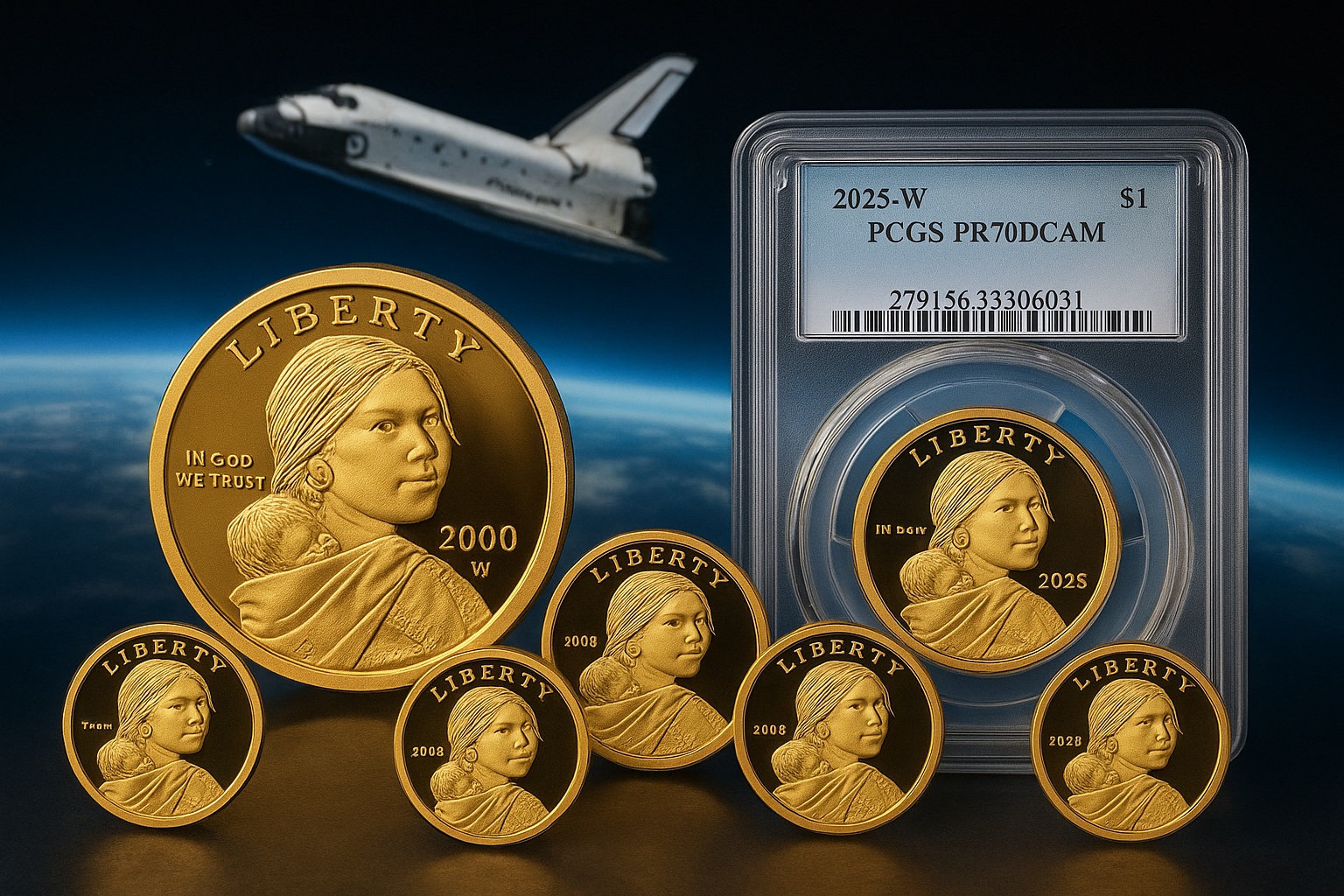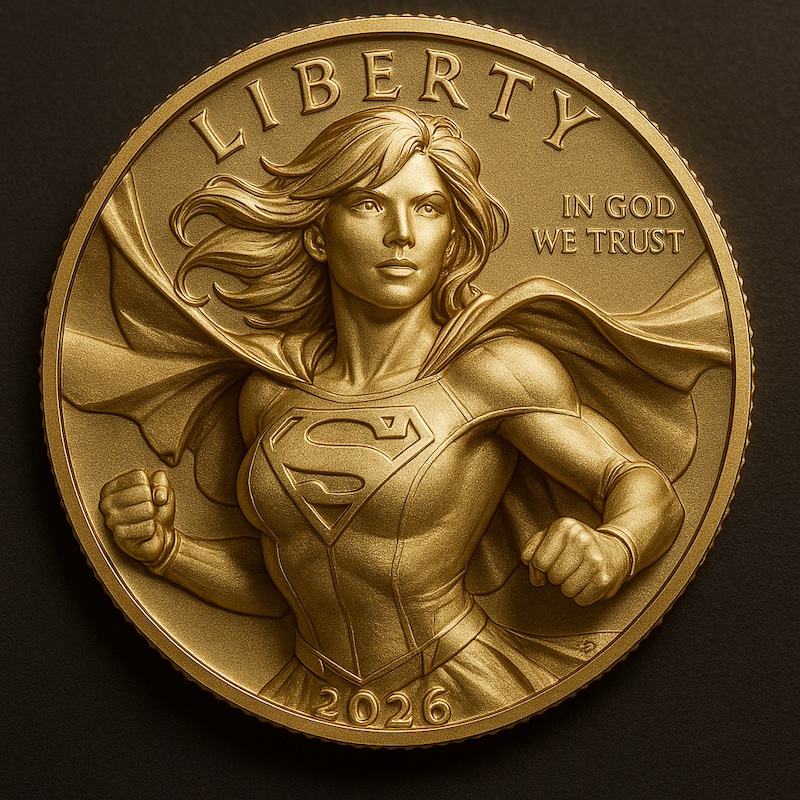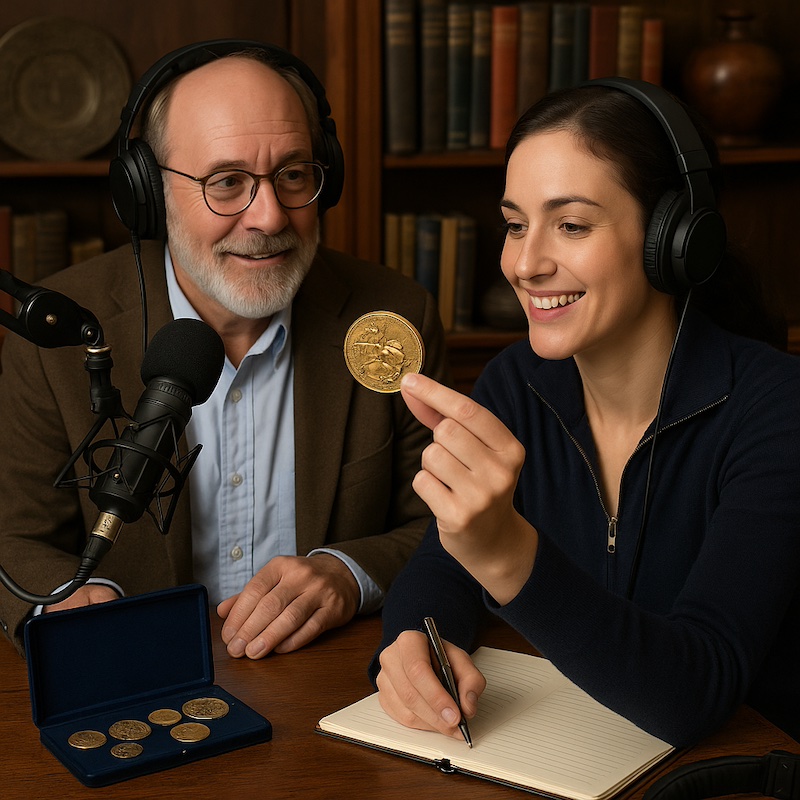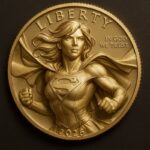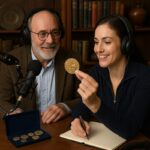In one of the most exciting moments in recent numismatic history, space-flown Sacagawea gold dollars recently sold at auction for prices ranging from $360,001 to $550,001 each. For collectors, investors, and numismatists alike, this event marks not only a milestone in modern U.S. coinage but also a fascinating intersection between space exploration and numismatic artistry.
These rare coins—flown aboard the Space Shuttle Columbia in 1999—carry with them a story that transcends metal and minting. They embody American innovation, the spirit of discovery, and the deep emotional value collectors place on artifacts that have literally traveled beyond our planet.
A Historic Auction: Stack’s Bowers Brings Space to the Auction Block
Earlier this year, Stack’s Bowers Galleries, one of the world’s most respected numismatic auction houses, closed the sale of eight rare Sacagawea dollars—seven struck in 22-karat gold that had journeyed through space, and one special first-struck 2025-W 24-karat gold Sacagawea dollar.
- Hammer Prices (2000-W 22K Space-Flown Proofs):
- $360,001
- $380,001
- $400,001
- $420,001
- $500,001
- $550,001
- $550,001
The 2025-W 24-karat gold Proof #1, celebrating the Sacagawea series’ 25th anniversary, realized $120,001—a strong result that reinforces the ongoing demand for modern rarities from the U.S. Mint.
From Columbia to Collectors: How These Coins Reached the Stars
To fully appreciate the significance of these sales, one must understand their extraordinary journey.
In July 1999, the U.S. Mint struck 39 Sacagawea dollars in 22-karat gold. Of these, 12 were selected to accompany the STS-93 mission aboard Space Shuttle Columbia, commanded by Colonel Eileen Collins, the first woman to lead a shuttle flight.
During the mission’s 1.8 million-mile voyage, these coins orbited Earth approximately 80 times, serving as ambassadors for the new Sacagawea dollar program, which would debut in circulation the following year (2000).
The remaining unflown examples were later destroyed, ensuring that only these few surviving specimens—flown, recovered, and now encapsulated by PCGS—exist as tangible symbols of both numismatic and aerospace history.
Certified by PCGS: The Role of Grading in Record Sales
Each of the space-flown Sacagawea gold dollars was certified by the Professional Coin Grading Service (PCGS) as Proof-69 Deep Cameo (PR69DCAM).
Grading adds immense credibility and liquidity to the modern rare coin market. As PCGS founder David Hall once said, “A certified coin is a verified piece of history with measurable value—trusted by collectors worldwide.”
In this case, PCGS certification not only confirmed the coins’ authenticity and condition but also preserved their provenance—a key factor in achieving six-figure results.
Why These Coins Matter: The Intersection of Space and Numismatics
These coins occupy a unique category within the broader field of collectible coins: space-flown numismatics.
Collectors of space memorabilia, investors in rare gold, and traditional numismatists all find value here. The rarity, historical narrative, and connection to both the U.S. Mint and NASA elevate these coins beyond traditional bullion or commemorative issues.
Key Factors Driving Value
- Historical Provenance: Only 12 space-flown examples exist.
- Gold Content: Each coin is struck in 22-karat gold, differentiating them from the standard manganese-brass circulating Sacagawea dollars.
- Crossover Appeal: Appeals to both coin collectors and space memorabilia enthusiasts.
- Certified Pedigree: PCGS encapsulation ensures authenticity and investment-grade security.
- Auction Provenance: Sold by Stack’s Bowers Galleries, a leading name in high-end coin auctions.
The 2025-W Sacagawea: A Modern Classic Emerges
Alongside the space-flown examples, the auction featured the first-struck 2025-W 24-karat gold Sacagawea dollar, minted for the 25th anniversary of the series.
Released on July 31, 2025, the half-ounce gold proofs—limited to 7,500 coins—sold out almost immediately at $2,175 each. The #1 certified coin, graded PCGS Proof-70 Deep Cameo, fetched $120,001—a remarkable premium over issue price.
This sale demonstrates the strength of modern U.S. Mint collector programs when low mintage, strong design, and historical continuity align.
Market Implications: What Collectors and Investors Should Know
The record prices achieved by these space-flown Sacagawea gold dollars signal broader trends in the numismatic market.
1. Provenance is King
In today’s collecting environment, stories matter as much as metal. Coins linked to specific events, individuals, or historical milestones tend to outperform generic issues—even when mintage is similar.
2. Modern Rarities Are Gaining Traction
While traditional collectors often favor 19th-century coins, a new generation of investors and hobbyists is recognizing the appeal of modern limited editions—especially those with verifiable historical connections.
3. Gold Remains a Safe Haven
In a period of economic uncertainty, tangible assets like gold coins offer both collectible and intrinsic value. These sales reaffirm investor confidence in precious metal numismatics.
4. Auction Houses Are Setting the Pace
Major firms like Stack’s Bowers and Heritage Auctions increasingly serve as market-makers, establishing benchmarks for rare modern coins that influence both retail and wholesale pricing.
Expert Insight: The Rise of Experiential Provenance
“We’re seeing a growing appetite for coins with lived experiences—items that have been somewhere, done something, or been part of history,” notes Jeff Garrett, past president of the American Numismatic Association (ANA).
He continues, “Whether it’s a coin that’s been to the moon, flown in orbit, or struck from shipwreck gold, provenance adds a layer of human connection that pure rarity can’t replicate.”
These space-flown Sacagawea gold dollars exemplify that principle perfectly.
Potential Risks and Considerations
Even with their appeal, collectors should approach such high-end coins with caution:
- Liquidity: While demand is strong, the buyer pool for six-figure modern coins is limited.
- Authenticity and Documentation: Provenance must be airtight—preferably with U.S. Mint, NASA, and PCGS documentation.
- Market Volatility: Auction results can fluctuate depending on economic conditions and collector sentiment.
- Storage and Insurance: Due to their rarity and value, proper preservation and insurance are essential.
How These Sales Reflect Broader Trends in the Coin Market
Over the last decade, numismatic auctions have seen increased participation from global investors, driven by online platforms, transparent pricing, and the blending of traditional collecting with alternative investment strategies.
According to Stack’s Bowers data, modern proof and gold issues have outperformed many classic U.S. series in percentage growth over the past five years.
This trend shows that the line between collector passion and investment logic is increasingly blurred—especially for coins that offer both.
TL;DR Summary
- Event: Stack’s Bowers sold eight rare Sacagawea gold dollars, including seven space-flown 22K proofs and one 2025-W 24K proof.
- Prices: Ranged from $120,001 to $550,001.
- Significance: Combines numismatics with NASA history.
- Market Insight: Strong demand for provenance-rich modern rarities.
- Takeaway: Space-flown coins redefine what it means for a coin to have “history.”
FAQs
1. How many space-flown Sacagawea gold dollars exist?
Only 12 were flown aboard the Space Shuttle Columbia in 1999. The remaining 27 were destroyed by the U.S. Mint.
2. Who graded the coins sold at auction?
All were certified by the Professional Coin Grading Service (PCGS), receiving Proof-69 Deep Cameo grades.
3. Why are these coins so valuable?
Their combination of spaceflight provenance, limited mintage, and U.S. Mint pedigree makes them among the most desirable modern issues ever produced.
4. What’s the difference between 22K and 24K Sacagawea gold dollars?
The 22K coins were special 1999 strikes flown aboard Columbia, while the 24K versions are modern commemorative issues, such as the 2025-W anniversary coin.
5. Are space-flown coins a good investment?
They can be, provided they have verifiable provenance and are certified by a top-tier grading service. However, as with all collectibles, values depend on market demand.
Conclusion: A Defining Moment in Modern U.S. Coinage
The sale of the space-flown Sacagawea gold dollars reminds collectors that numismatics is as much about stories and significance as it is about rarity and condition.
For investors, it highlights the enduring allure of gold coins with historic provenance. For numismatists, it’s a call to appreciate the artistry and symbolism behind each U.S. Mint issue.
As the coin market evolves, pieces like these bridge the gap between collectible artifact and national legacy—proving once again that even in the 21st century, coins can still inspire wonde
